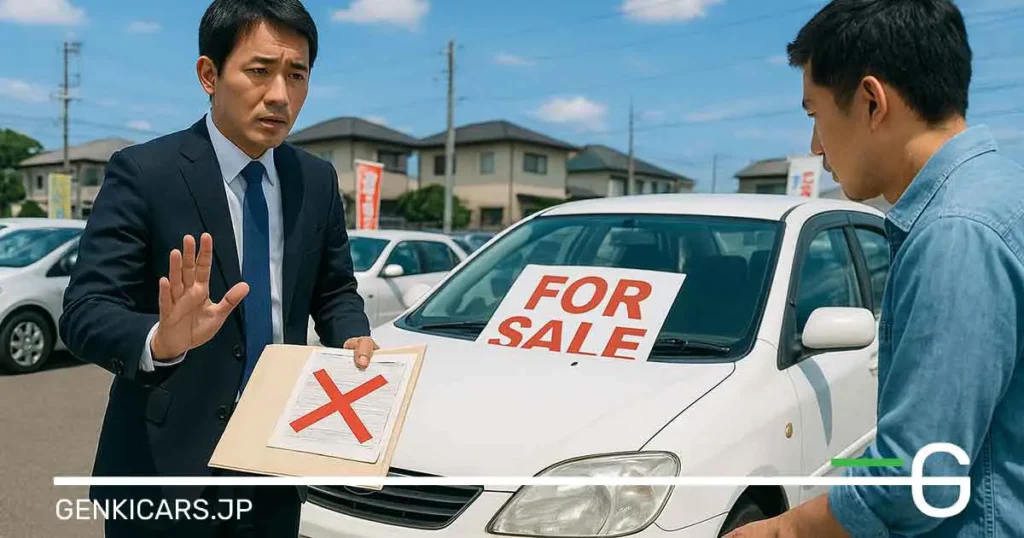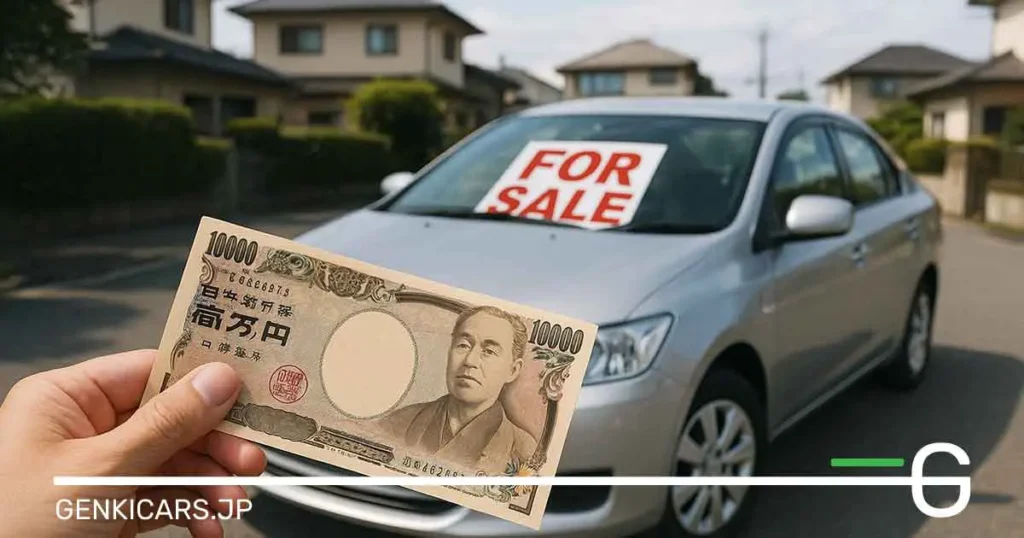So you want to buy a car in Japan? Great choice! But here’s something that catches most foreigners off guard: you need proof of parking before you can register your vehicle.
In Japan, you can’t just buy a car and figure out parking later. The government wants to make sure every car has a home. This rule exists because Japan has limited space, especially in cities like Tokyo and Osaka.
This parking proof is called a shakoshomei (車庫証明). Let’s break down everything you need to know.
What Is a Shakoshomei?
A shakoshomei is your official parking certificate. It’s a document from the police that says “yes, this person has a legal place to park their car.”
Think of it like a parking passport. No shakoshomei = no car registration = no driving.
The police issue this certificate after checking that:
- You have a real parking spot
- The spot is close enough to your home
- The spot is actually available for you
Who Needs a Parking Certificate?
Almost everyone who owns a car in Japan needs one. This includes:
- Japanese citizens
- Foreign residents with long-term visas
- Anyone buying a second hand car in Japan
- People switching to a new vehicle
There’s one exception: if you live in certain rural areas where parking isn’t an issue, you might not need one. But that’s rare.
Where Can You Park Your Car?
You have three main options:
Apartment or House Parking
If your apartment building has parking spots, this is the easiest option. Talk to your landlord or building management. They’ll give you a contract or letter confirming you have a space.
Cost: Usually ¥10,000-¥30,000 per month in cities. Can be free in rural areas.
Monthly Parking Lots
These are parking companies that rent spaces monthly. You sign a contract just like renting an apartment.
Popular parking companies:
- Times Parking
- Park24
- Nippon Parking
Cost: ¥15,000-¥50,000 per month depending on the city and location.
Private Land
Know someone with extra space? You can rent from them. This works with:
- Friends or family members
- Local property owners
- Small businesses with unused parking
You’ll need a written rental agreement. Even informal arrangements need paperwork for the police.
How Close Must Parking Be to Your Home?
This is important: your parking spot must be within 2 kilometers (about 1.2 miles) of your registered address.
The police measure this as straight-line distance, not walking or driving distance. In Tokyo and big cities, this usually isn’t a problem. In spread-out rural areas, you might need to check.
Documents You Need
Getting your shakoshomei requires these papers:
- Application form (Shako Shomei Shinseisho)
- Get it at your local police station or download online
- Fill out car details and parking location
- Parking space map
- Shows exactly where your spot is
- Include nearby landmarks and streets
- Hand-drawn maps are OK if clear
- Proof of parking rights
- Rental contract from your landlord
- Parking lot agreement
- Property owner’s consent form (if renting private space)
- Residence card (Zairyu Card)
- Shows you live at your registered address
- Property layout diagram
- Simple drawing showing the parking space dimensions
- Mark entrance, exit, and your specific spot
Don’t worry if this sounds confusing. Most parking companies and landlords know exactly what you need. They’ve done this before.
Step-by-Step: How to Get Your Shakoshomei
Step 1: Find Your Parking Spot
Before anything else, secure a parking space. Remember the 2km rule from your home.
Step 2: Get Parking Proof
Ask your landlord or parking company for:
- A rental contract, or
- A consent letter (Hosho-sho)
They know what police need. Just tell them it’s for your shakoshomei.
Step 3: Go to the Police Station
Visit the police station that covers your parking location’s area (not your home address).
Bring all your documents. Police officers will review everything.
Step 4: Pay the Fee
Application costs around ¥2,000-¥2,800 depending on your prefecture.
Pay at the police station. They’ll give you a receipt.
Step 5: Wait for Processing
Processing takes 3-7 business days normally. Police might visit your parking spot to verify it exists and matches your description.
Step 6: Pick Up Your Certificate
Return to the police station when they tell you. Bring your receipt.
You’ll get your official shakoshomei certificate. Keep this safe – you need it for car registration at the land transport office.
How Much Does Everything Cost?
Here’s what you’ll spend:
- Police application fee: ¥2,000-¥2,800 (one time)
- Monthly parking rent: ¥0-¥50,000 (depends on location)
- Initial parking deposit: Usually 1-2 months rent
Total first-time cost: Around ¥20,000-¥100,000 depending on where you live.
Cities like Tokyo and Osaka are expensive. Smaller cities are much cheaper.
Common Problems Foreigners Face
“My Landlord Doesn’t Have Parking”
This is common in older buildings. You’ll need to rent a nearby parking spot separately. Search online for “月極駐車場” (monthly parking) plus your area name.
“The Application Form Is All in Japanese”
Most forms have no English version. Ask a Japanese-speaking friend to help, or use your phone’s camera translator app. Some car dealers (like those on GenkiCars) can help with paperwork.
“Police Rejected My Application”
Usually happens because:
- Parking is more than 2km from home
- Documents don’t match
- The parking spot is already registered to someone else
Check everything carefully before submitting.
“I’m Leaving Japan Soon”
If you’re only in Japan temporarily, parking companies offer month-to-month contracts. Read the cancellation policy before signing. You’ll want easy exit terms when you sell your car.
Tips to Make the Process Easier
Tip 1: Start looking for parking BEFORE you choose your car. No parking = no car purchase possible.
Tip 2: Bring a Japanese-speaking friend to the police station. While some officers speak English, most communication is in Japanese.
Tip 3: Take photos of your parking space from multiple angles. If police can’t visit in person, photos help.
Tip 4: Keep copies of everything. Police station, land transport office, and insurance companies all want to see your shakoshomei.
Tip 5: If buying from a dealer, ask if they offer shakoshomei assistance. Many English-speaking car dealers include this service.
What Happens After You Get Your Certificate?
Once you have your shakoshomei, you’re ready for the next steps:
- Register your vehicle at the land transport office (Unyu Shikyoku)
- Get insurance – both compulsory and optional coverage
- Complete the purchase with your dealer
Your shakoshomei is valid for one month from issue date. Don’t wait too long to register your car.
If the certificate expires, you’ll need to apply again and pay the fee again.
Do You Need a New Certificate When Moving?
Yes. If you move to a new address, you need a new shakoshomei.
You have 15 days after moving to update your car registration. This means getting a new parking certificate near your new home.
The process is the same – find parking, get proof, visit police station, pay fee, wait.
Kei Cars and Parking Certificates
Here’s good news: if you buy a kei car (those small 660cc vehicles), rules are different in some areas.
In less crowded regions, kei car owners don’t need a shakoshomei. You just need to show you have “somewhere” to park – no police certificate required.
This makes kei cars popular with foreigners who want less paperwork.
But in major cities (Tokyo, Osaka, Yokohama, Nagoya), even kei cars need the full shakoshomei process.
Getting Help with Your Parking Certificate
The shakoshomei process can feel overwhelming, especially when dealing with Japanese paperwork and police procedures.
Many car dealers assist with this process, especially those who regularly work with foreign buyers. When shopping for a vehicle, ask dealers about their document support services.
Some offer:
- Help filling out forms
- Communication with police stations
- Finding parking near your home
- Translation services
This support can save you hours of confusion and multiple trips to the police station.
Ready to Buy Your Car?
Now you know the parking certificate process from start to finish. It takes some effort, but thousands of foreigners do this successfully every year.
Remember the key points:
- Find parking within 2km of home
- Gather all required documents
- Apply at the police station covering your parking area
- Wait 3-7 days for approval
- Use certificate within one month
Once you have your shakoshomei, you’re ready to complete your car purchase and start driving in Japan.
Looking for a second hand car in Japan? Check out vehicles from dealers who understand the foreign buyer experience and can guide you through every step – including parking certificates.
Related Articles:


